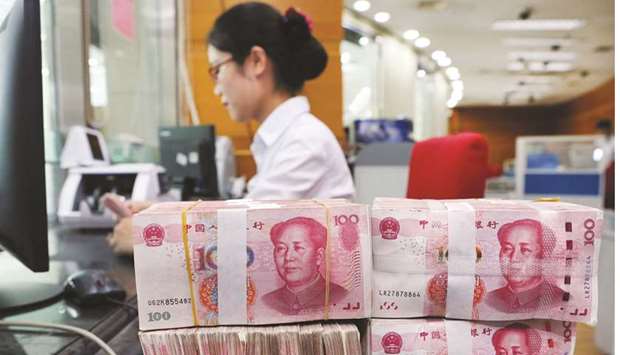China’s currency saw its biggest weekly surge since July 2005, and technical indicators suggest more gains are coming.
Buying momentum is the strongest in almost a year and options traders are turning bullish.
A rising currency makes China’s financial markets more attractive to overseas investors – foreign flows into the country’s debt surged in December – which may further buttress gains.
Throw in a dovish Federal Reserve along with signs of progress in trade talks, and the sell-off of just a few months ago seems a distant memory.
The yuan’s 14-day relative strength against the dollar is at the highest since February 2018, reflecting a rise in buying momentum.
Investors are turning bullish on the Chinese currency, which has room to climb further in the long term thanks to a weaker dollar, according to Ken Peng, a Hong Kong-based investment strategist at Citigroup Inc.
The greenback had fallen to its weakest level since September, making dollar assets less appealing relative to those denominated in the yuan.
The slide came as several Fed officials, including chairman Jerome Powell, reinforced the message that the US will likely take a break from raising rates in the coming months.
Powell said on Thursday the Fed will keep shrinking its balance sheet.
Traders have been paring bearish bets on the Chinese currency quickly and even turned slightly bullish in the options market.
That had pushed the offshore yuan’s one-month risk reversal down to the lowest level since 2011 this week.
The offshore yuan will rise to 6.6 per dollar, as progress on trade talks, less bearish sentiment among onshore corporates and a rebound in capital inflows will support the currency, Lu Sun, a strategist at Citigroup in Hong Kong, wrote in a note yesterday.
Foreign investors boosted their holdings of Chinese debt last month by the second-most on record – reversing November’s net selling.
The $12tn market will see $80bn of inflows this year, according to Morgan Stanley, with some onshore debt on track for a phased-in inclusion to the Bloomberg Barclays Global Aggregate Index in April.
The onshore yuan surged 0.64% to 6.7458 per dollar as of 4.39pm in Shanghai, extending its jump from January 4 to 1.9%.
That’s the exchange rate’s biggest weekly advance since July 2005 on a closing basis, when China abandoned its currency peg to the greenback.
The yuan is also the top performer in Asia over the past five days.

An employee counts 100 yuan notes at a bank in Nantong, Jiangsu province. The yuan’s 14-day relative strength against the dollar is at the highest since February 2018, reflecting a rise in buying momentum.
